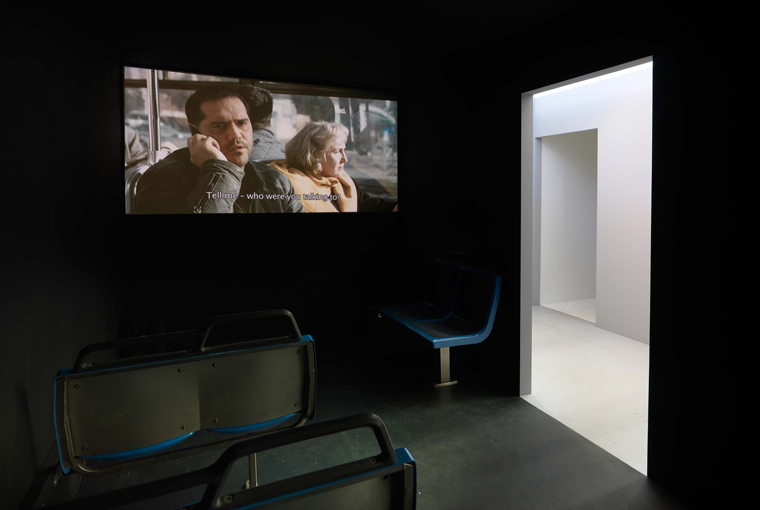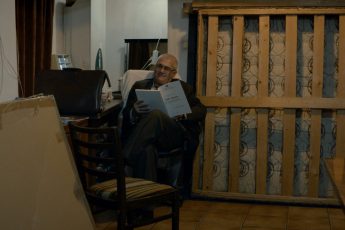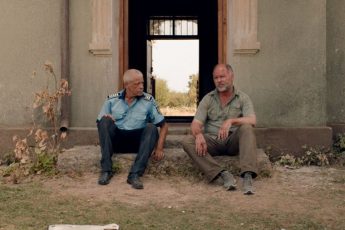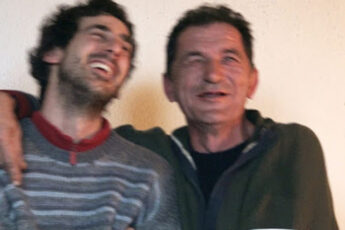
In the preface to the first edition of Visionary Film, P. Sitney describes the relationship of American avant-garde cinema to American mainstream cinema as that of “radical otherness”. “They operate in different realms with next to no significant influence on each other,” he claims, young independent film-makers in the forties fleeing the structures set up by commercial cinema by seeking refuge in the European avant-garde tradition. Though American avant-garde has gone through various changes on the level of aesthetics, structure, subject, and even technology, the opposition between norm and deviation is one that, in one way or another, is upheld until today. This dialectic is even visible in film theory, in which the discussion of mainstream cinema and avant-garde films is typically separated (unless, of course, this very opposition is the subject-matter of the investigation). More importantly, scholars like Sitney do not seem to treat this relationship of thesis and antithesis as one that leads to synthesis. It has become the consensus to think that these two visual modes function quite independently of one another, with the structurally aware avant-garde film occasionally backbiting their more popular counterpart. Though Sitney does not see avant-garde film as a simple critique of (or, reaction to) Hollywood, there are certain features of visual culture that are left unvoiced by mainstream culture, which avant-garde tries to confront. Evidently, there exists a tension between these two forms of visual expression, a constitutive disagreement about the form and purpose of art.
It seems justified, then, to ask how these two forms can be understood in a country like Romania, where no tradition of mainstream cinema even remotely comparable to Hollywood exists. How can there be an independent avant-garde opposed to cinema, if cinema itself is mostly independent and opposed to mainstream culture? Of course, there are a few cases of very radically mainstream cinema in Romania, and, as has previously been mentioned in this journal, during Ceaucescu’s rule, cinema used to be more dominant than it is today, the system allowing the production of several commercial films a year. But nowadays, mass culture is not dominated by these films. If there were a reason for Romanian artists to oppose Romanian mainstream films, it would probably be the fact that they are like bad copies of American cinema, like imitations of Hollywood that lack its ultimate precondition: craft. In his work, Sitney criticises terms like “film poems” and “experimental film” because they presuppose a counterphenomenon (which can evidently be interpreted as mainstream cinema): the term “poem” that of prose, the term “experimental” that of non-experimental film. But avant-garde is trapped in the same dilemma. Can there be an avant-garde cinema if there is nothing to counter, and nothing to anticipate? If there is nothing that the mainstream language can learn from avant-garde cinema, then what is its purpose? With regard to Romania, this leads to a challenging question: can there be avant-garde films next to a cinema that is itself avant-garde?
One of the most important contemporary Romanian visual artists is Stefan Constantinescu, who was born in Bucharest in 1968 and is now active both in Stockholm and his hometown. After the fall of communism, Constantinescu received two degrees from the Romanian Academy of Arts in Bucharest and the Royal Academy of Arts in Stockholm, completing his studies in 1998 at the age of 30 (Cristian Mungiu graduates from the national film school the same year). Like many contemporary Romanian filmmakers, Constantinescu is strongly influenced by his experiences growing up under Communist rule, also dealing with Romania’s difficult transition into democracy. In 2000, Constantinescu presents Archive of Pain in Bucharest along with his co-authors Cristi Puiu and Arina Stoenescu, an installation containing 4 flexible, cell-like projecting rooms, in which archive footage from the Communist rule is intercut with recollective monologues from political prisoners of the time. The films that add up to a total running time of nine hours were accompanied by a book and a website (unfortunately, the latter cannot be accessed anymore). Gradually, though, Constantinescu’s work becomes more autobiographical. Sometimes, his films are concretely personal, like in Dacia 1300, My Generation, in which he conducts interviews with neighbors from old times about the Dacia, a Romanian car established during Ceaucescu’s rule that is now part of Renault (the first factory for the Dacia was built in 1968, the year of the Prague Spring, which is also the year that Constantinescu was born in). At other times, his films seem fully detached from Romania and his personal experiences, like Passajen, in which Constantinescu portrays three Chilean men who were forced to leave their homecountry after Pinochet seized power in Chile. But surprisngly, the story of the escape goes through Romania, and the repressive power structures thwarting the will of the people under Pinochet won’t seem unfamiliar to Romanians, either.
Constantinescu’s work has been exhibited internationally, with Galery8 in London and the lokal_30 Gallery in Warsaw representing him permanently (Galery8 also showcases some of Constantinescu’s more recent paintings). In 2009, Constantinescu presents his (quasi-)documentary My Beautiful Dacia, which is a retake on Dacia 1300, My Generation, but more nuanced and directional, focusing on the different generations and peoples who have dealt with Dacias in the past, and are dealing with them today – in a Romania that is part of the European Union (although admittedly, even in Romania this fact is seen with much scepticism these days). In the short Troleibuzul 92 (2009), a man on a bus (trolleybus, that is) swears at his lover / girlfriend / wife with whom he is on the phone for a good 5 minutes, the other passengers remaining quiet, not daring (or, worse so, not bothering) to interfere. At the end of the conversation, the man leaves the bus, and another man, though a little younger, takes his seat. The struggles with trying to define digital art and, in the case of Romania, even the dominant cinema (for New Wave is a term Puiu & Co refuse to subscribe to) aside, the clear distinctions between two completely “independent” arts that Sitney observed in American visual culture do not pertain. On the very contrary, Constantinescu’s work seems to merge with the general stance of current Romanian cinema. As do films by directors like Puiu or Porumboiu, Constantinescu explicitly deals with language and its non-existence (e.g. in Troleibuzul 92), with past, though altered verbal regimes that continue to exist (e.g. My Beautiful Dacia), with individuals defined by the collective or the system (e. g. Troleibuzul 92, My Beautiful Dacia, or, in a more tragic way, Archive of Pain), and with loneliness, alienation and strangeness (e.g. Passagen). But this observation is by no means meant as a critique. I believe that it proves that the direction of Romanian cinema has not given way to the pioneer role usually claimed by the avant-garde, the latter inevitably evolving in synchrony to the former one.
In Romania, though, both classical cinema and Constantinescu’s semi-classical works are facing a fatal problem: the relative lack of serious critique on the subject(s). Through the extensive publications and brochures that accompany his exhibits, Constantinescu has succeeded in introducing a verbal discourse of his own. Similarly, Constantinescu’s latest project The Last Analog Revolution, a Memory Box (initiated along with Xandra Popescu) brings together the work of many Eastern European artists in an attempt to replace a monologue about a public memory (the revolution) through a collective discussion, converging toward the truth of the original event and further intensifying an intellectual analysis of the past, rather than a purely cinematic one. Besides, the harmonious interplay of visual art and classical cinema could indeed reach a synthesis in a Romanian context, creating a discourse of their own.
Finally, though, the question that remains to be answered is that of possible differences between classical cinema and visual art. But here, it seems, the general observations on avant-garde cinema that Sitney and others have made in the US are applicable in Romania, too. Avant-garde films and video art are always more abstracted, more aware of their structure, more emerged in a discourse (and consequently less appreciated by a general audience). Indeed, Constantinescu’s films are like further abstractions from the already minimalist cinema of his countrymen. But less can be more.




Leave a Comment